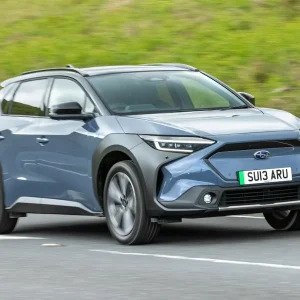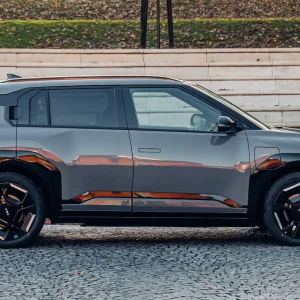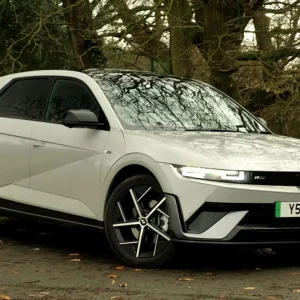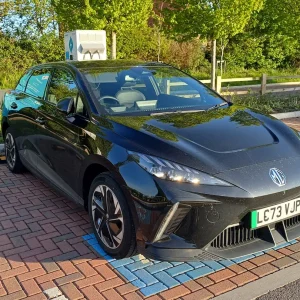The Mazda CX-3 brought a dash of sporty style to the small SUV sector when it was launched in 2015, with chiselled lines, a gaping grille and deft handling.
Mazda treated its CX-3 to a mild facelift last autumn, which brought with it a new 1.8-litre diesel engine – as well as some minor cosmetic changes.
Understated but well specced
Mazda interiors are certainly better known for their quality feel rather than flair, and the CX-3 is no different. Following the industry mantra that sporty must mean black, the CX-3’s cabin is rather dark, with a few scratchy plastics, the only break from the dull colour scheme being the dash-mounted, 7in touchscreen.
However, with its pseudo-carbon fibre inserts, soft-touch dash inlays and bulging steering wheel, there is certainly a distinct personality to the CX-3, even if the cabin is a little introverted.
Regardless of how muted its interior design may be, kit is generous on all models. Entry-level CX-3s get air-con, cruise control, DAB radio and the aforementioned 7in touchscreen, which also comes fitted with sat-nav. The flagship Sport Nav+ grade of our test car adds a few safety features – including lane departure warning – as well as heated, part-leather seats.
However, the biggest boon of the CX-3’s interior is its rotary dial media control that is mated to the touchscreen system. Incredibly simple to use – from its reassuring click to its menu and sat-nav buttons either side of it – it is second only to BMW’s renowned i-Drive system for ingenuity and user-friendliness.
Small inside
As it sits on the Mazda2’s platform, the CX-3 does feel rather compact. Up front, the door bins are so-so, the centre console is a little cramped and there is no escaping its all-round snug feel. In the rear, leg and headroom will just about accommodate
six-footers, but not particularly comfortably. The rear is ideally meant for kids, especially with its raised middle seat.
Like the Mazda2, the boot opening is a little restricted in the CX-3, but it does offer an additional 95 litres of space compared with its supermini brother, with 350 litres with the seats in place. The Bose sound system of the Sport Nav + model does take up 63 litres of that space, however.
Thanks to an adjustable boot floor, you can eliminate any signs of an awkward load lip in the CX-3 and, once you fold the seats down, you are left with a smooth run to the back seats, which makes loading longer objects much easier.
Fun to drive
Although the CX-3’s ride feels slightly domesticated compared with its Mazda2 counterpart, it still manages to offer a similar apex-ready character. The suspension set-up almost feels like a comfort mode variant of the Mazda2, offering enough tautness to stay planted in the corners, but enough give to soak up most bumps with ease.
The steering is what gives the CX-3 its appeal though, being light, accurate and responsive, even when thrashing it on a country lane. But the CX-3 will happily play the part of a cruiser on the motorway – and you will feel refreshed after a long stint thanks to its comfortable driving position.
Speaking of motorway cruising, the newly added 115hp 1.8-litre Skyactiv-D diesel we tested is aimed at offering low running costs, and it does a great job of it. Mazda claims an average of around 54mpg with this diesel – and that is certainly achievable – especially if you take it easy on the throttle. The 1.8-litre diesel does lack character though, and even though it is up 10hp on the 1.5-litre engine it replaces, it takes a while to climb the revs and feels a little gutless when up to speed.
For those after efficiency, it fits the bill. But to really get the most out of the CX-3’s fun-loving personality, you are better going for one of the petrols.
Mazda CX-3 1.8 D Sport Nav+
P11D: £23,030
Residual value: 40.2%
Depreciation: £13,758
Fuel: £5,658
Service, maintenance and repair: £1,866
Cost per mile: 35.47p
Fuel consumption: 54.3mpg
CO2 (BIK band): 114g/km (30%)
BIK 20/40% a month: £115/£230
Boot space: 350 litres
Engine size/power: 1,749cc/115hp





